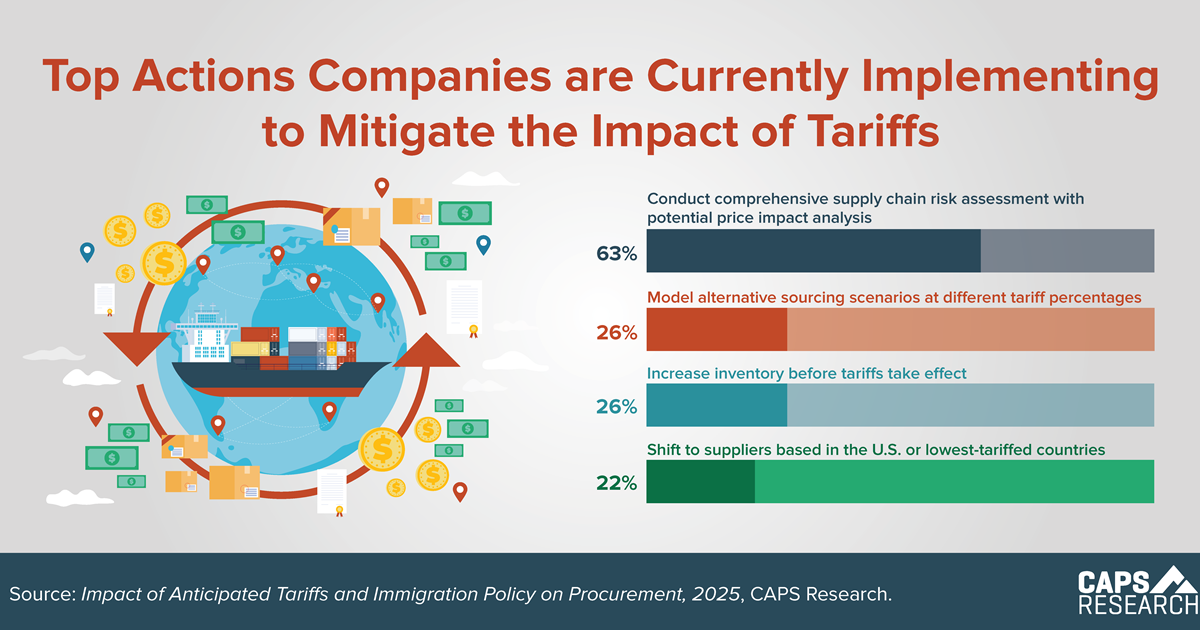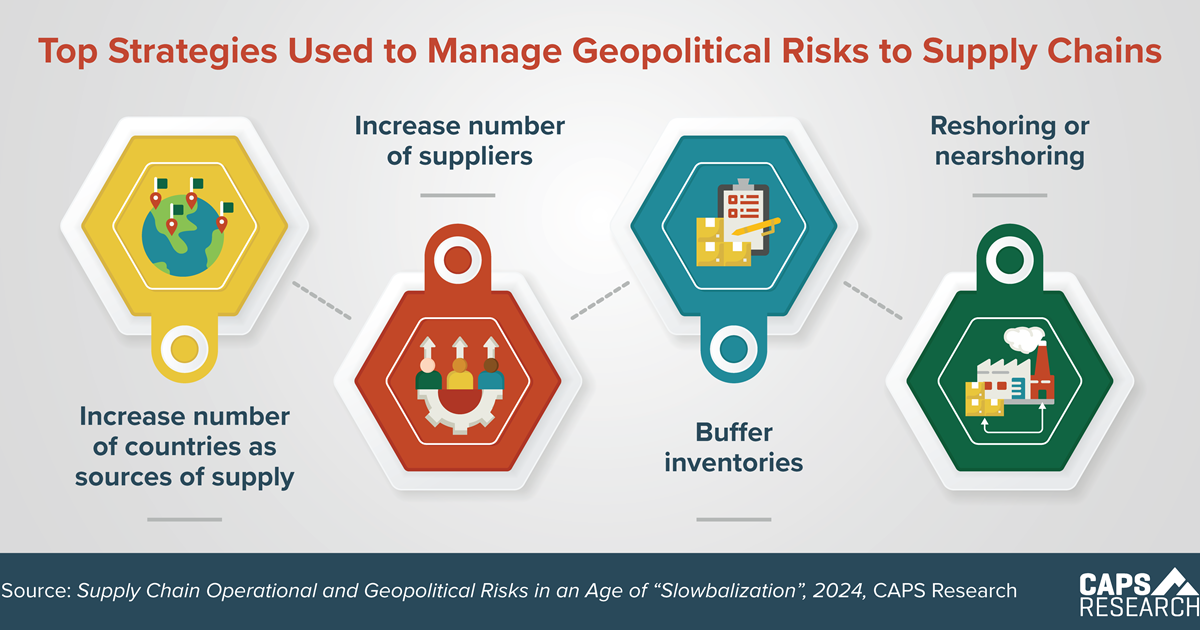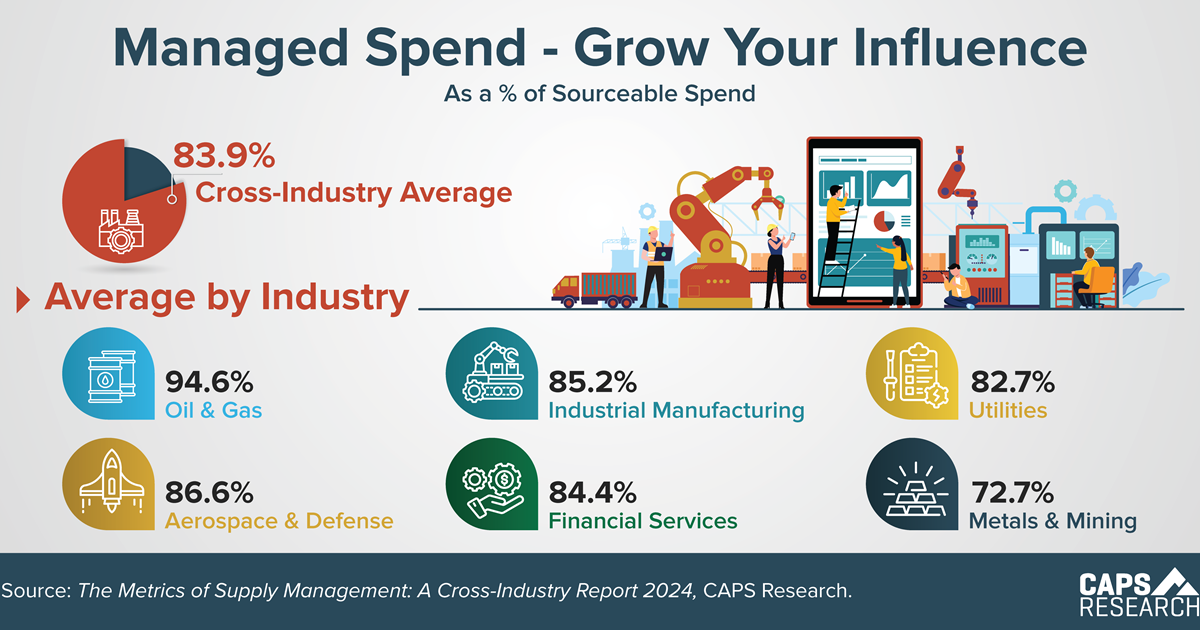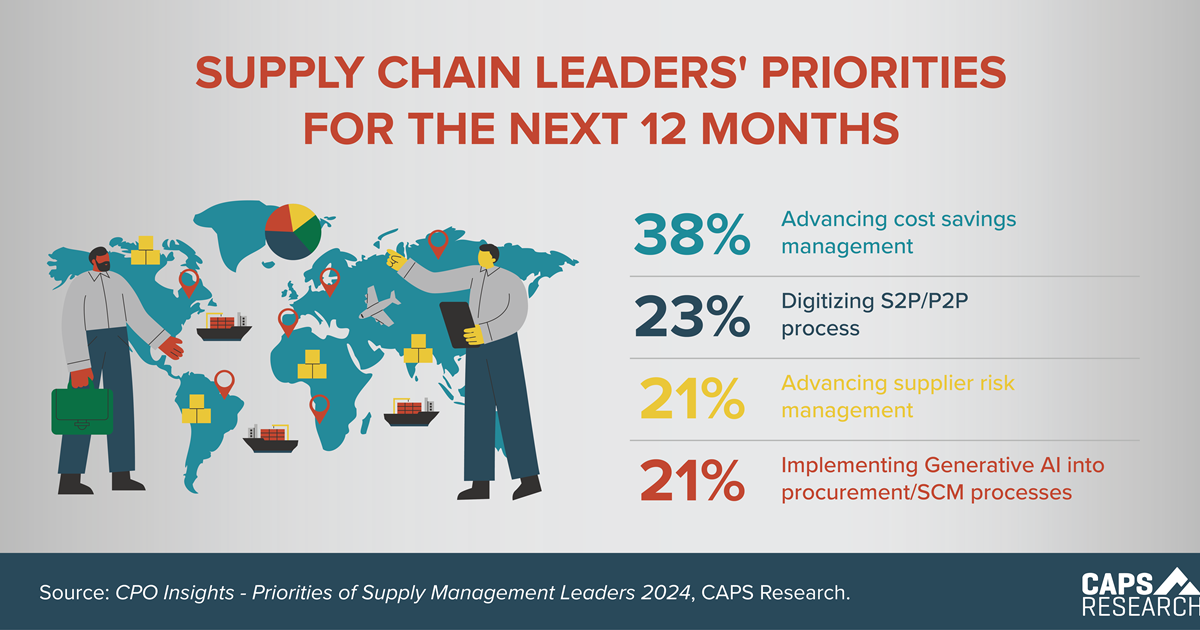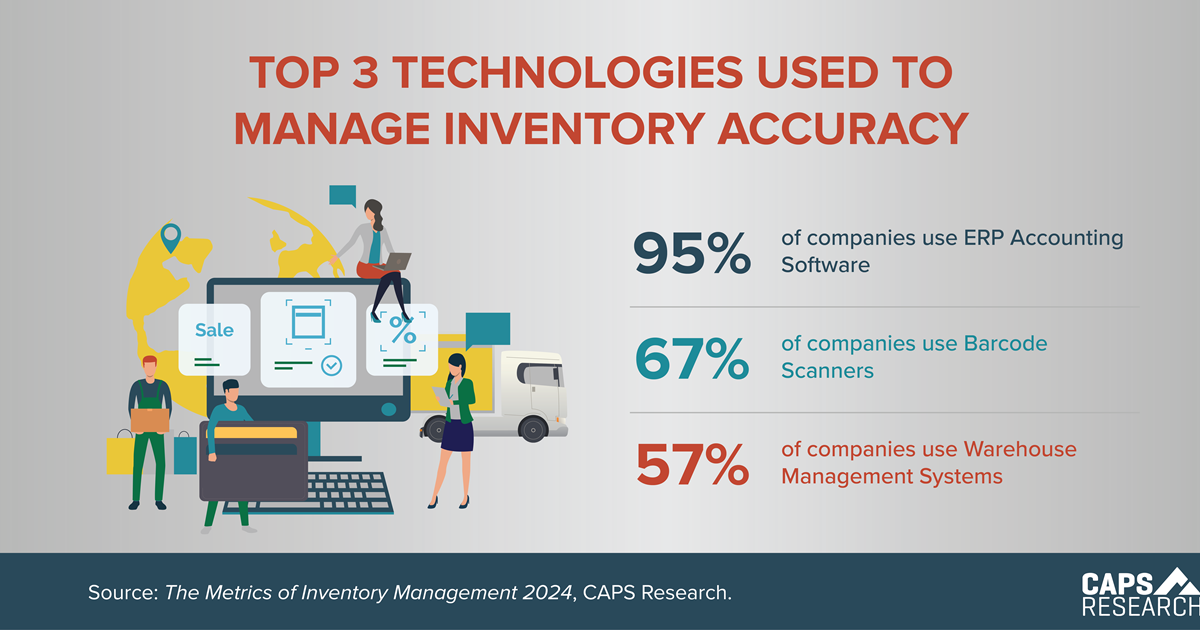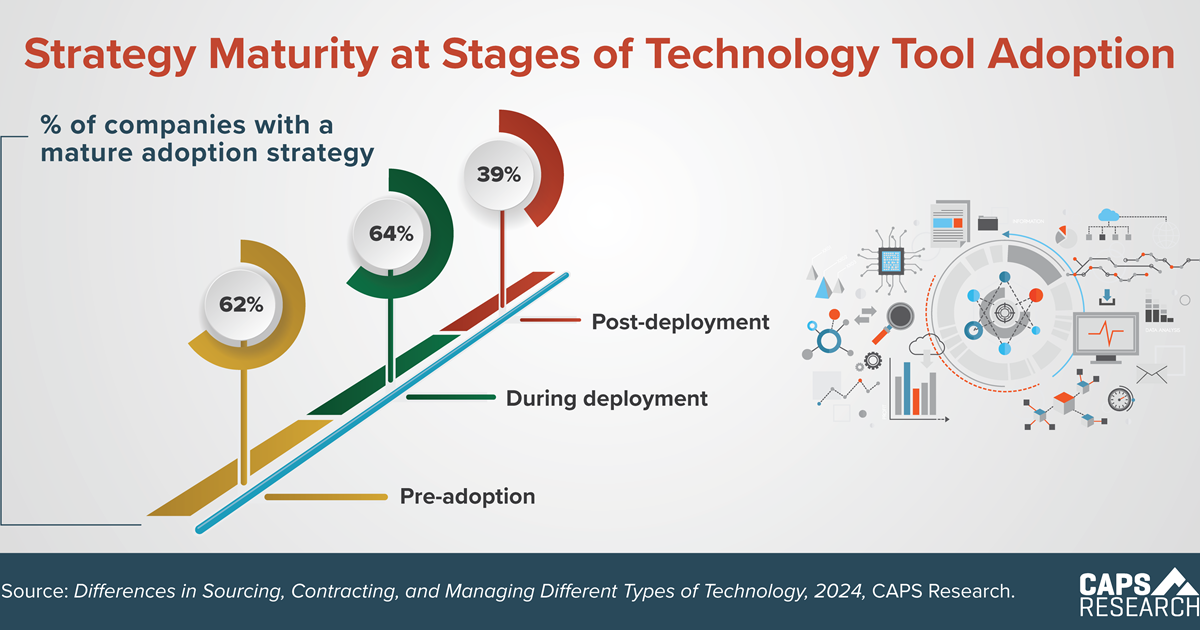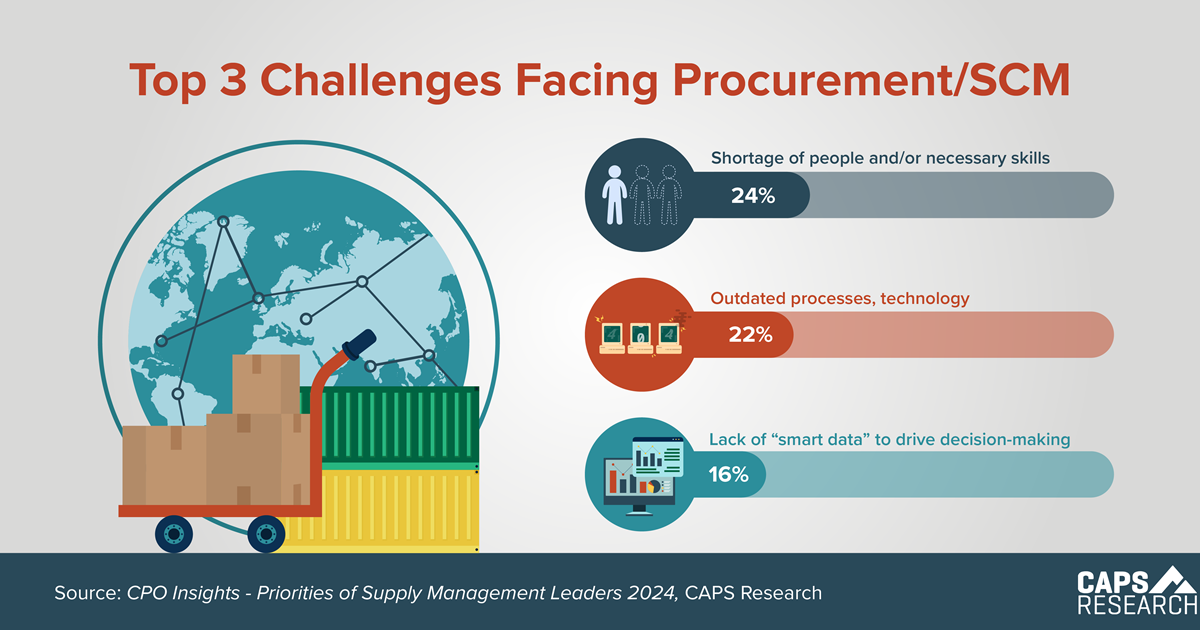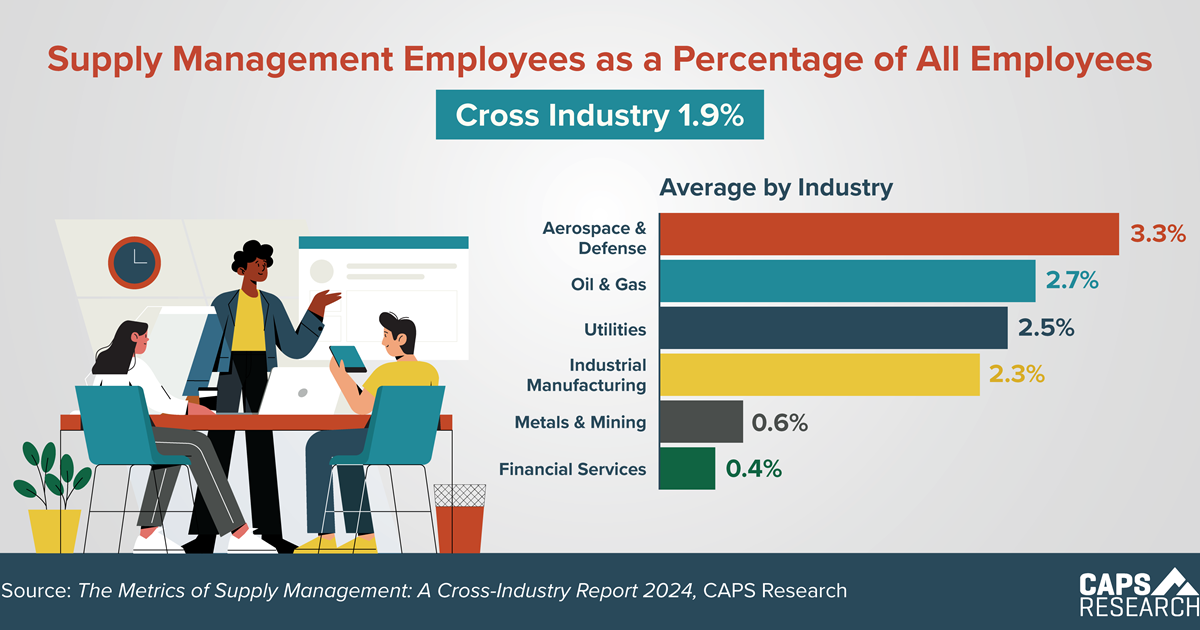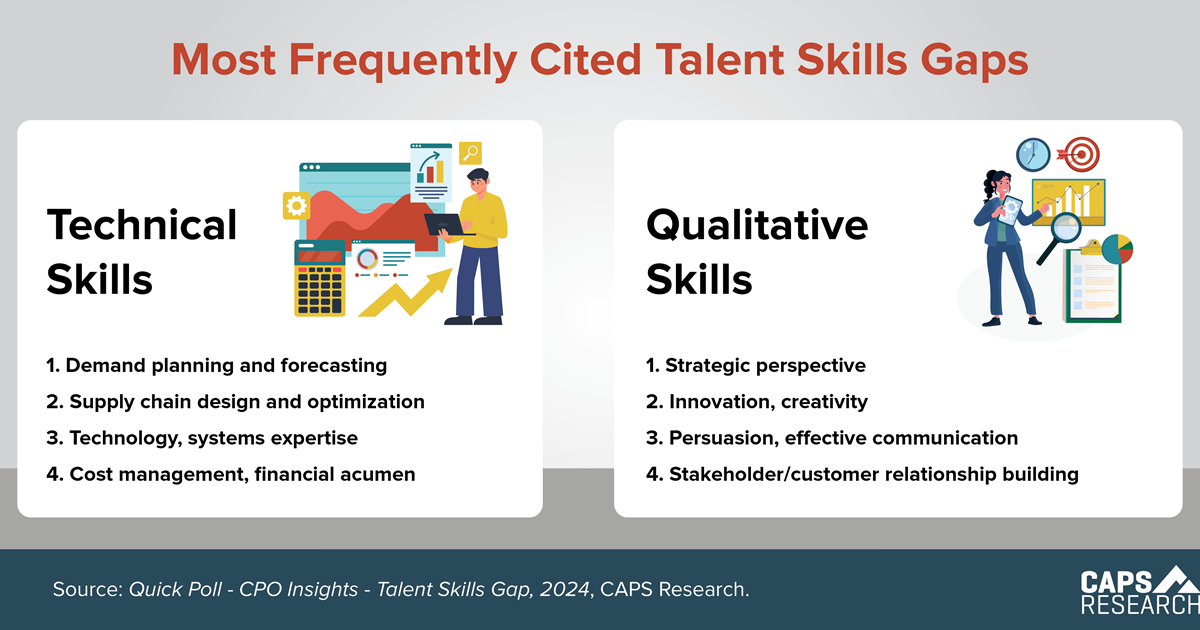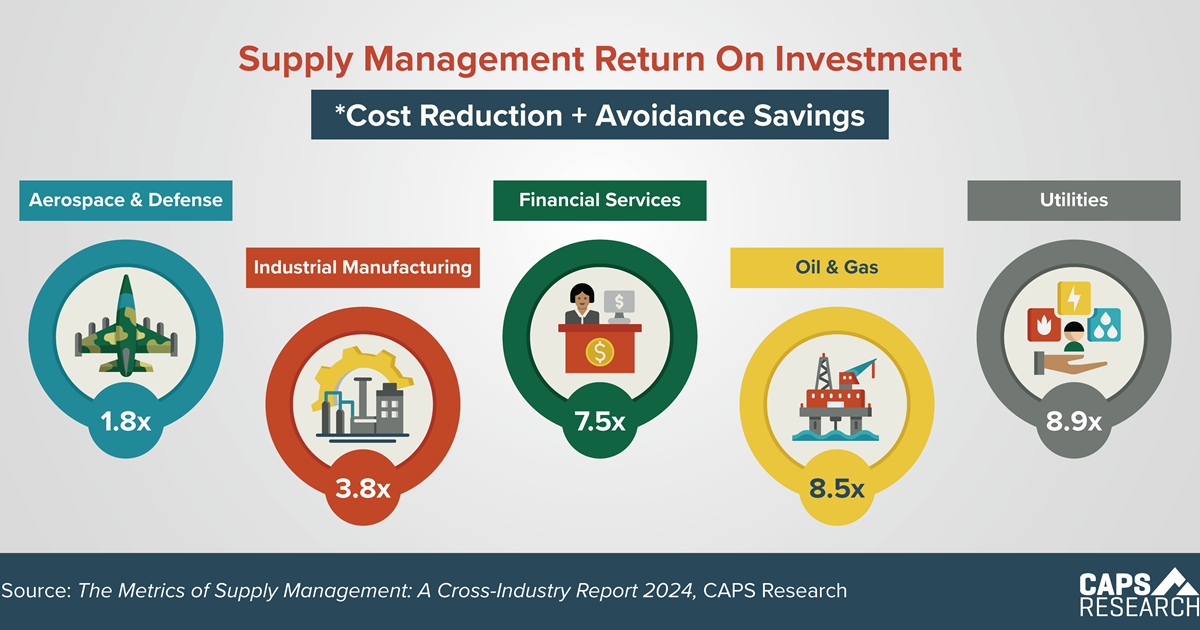Companies are currently implementing a number of actions in order to mitigate the impact of potential new tariffs. The leading action companies are currently taking is conducting comprehensive supply chain risk assessments with potential price impact analysis (63%). These risk assessments are crucial for procurement/SCM professionals to help ensure business continuity and understand potential financial risks to the company.
Manage Geopolitical Risks
While geopolitical risks are often unknown and uncontrollable, the top strategies global organizations use to manage these supply chain risks include increasing the number of countries as sources of supply; increasing the number of suppliers; buffering inventories; and reshoring or nearshoring. These approaches help to minimize the risk of disruptions caused by geopolitical tensions while also enabling faster responses to market demand fluctuations.
Managed Spend
When the business involves the supply management group in purchasing and sourcing, it can increase savings, better leverage organizational spend, negotiate stronger contracts, and protect the organization from supplier risk. Managed spend, as a percentage of sourceable spend, is a primary indicator of a company’s ability to capture value from the supply management process.
Leaders' Priorities
Supply chain leaders’ top priorities for the next 12 months are advancing cost savings management, digitizing the S2P/P2P process, advancing supplier risk management, and implementing Generative AI into procurement/SCM processes. Advancing the department through technology is a priority that delivers high returns with improved efficiency and reduced operating expense.
Top Inventory Technologies
The top 3 technologies used to manage inventory accuracy are ERP/Accounting Software, Barcode Scanners, and Warehouse Management Systems, according to the recent Metrics of Inventory Management report. Inventory accuracy gives you actionable insights into your stock levels and helps you make smarter business decisions.
Adoption Strategy Maturity
When adopting a new technology tool, 62% of companies indicated they have a well-established and mature strategy for the pre-adoption stage, and 64% have a mature strategy for the deployment stage. Companies with a mature post-deployment strategy drop substantially to 39%. Without a strong strategy in all stages companies will likely experience integration challenges and decreased ROI over time.
Top 3 Challenges
The top challenges facing CPOs is shortage of people and/or necessary skills, followed by outdated processes and technology, and lack of “smart data” to drive decision making. Solutions to these challenges are critical for effective operations and decision-making.
Percentage of SM Employees
According to the CAPS MoSM Report, only 1.9% of the total headcount across all industries are supply management employees. The number has remained relatively flat the last five years, while the scope and expectations of the function have grown in contrast to other corporate functions. Some have used this metric (along with CAPS’ ROI) to justify an investment in headcount.
Talent Skills Gaps
A recent quick poll of supply management leaders revealed the top talent skill gaps. 50% reported the top technical skill gap was demand planning and forecasting, while 67% said the top qualitative skill gap was strategic perspective. Improving skills equates to improving profitability since teams with above median performance deliver greater ROI (Cost reduction/salary expense).
Supply Management ROI
Supply management ROI is a simple way to communicate the value your supply management group delivers to stakeholders. The overall 2024 ROI is 731%. Another way to express ROI is for every US $1 invested in supply management, the function returned $7.31 on average in reduction + avoidance savings. What other function can claim this type of return?
Non-members can receive the report of each survey they submit.
Members can access all reports, but are encouraged to submit surveys to
increase the comparative breakouts only they receive.
